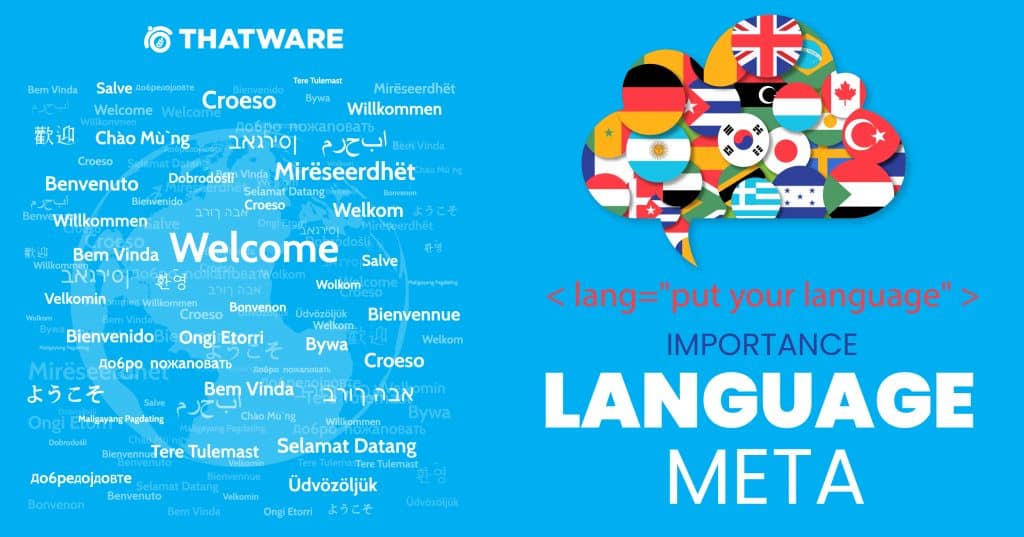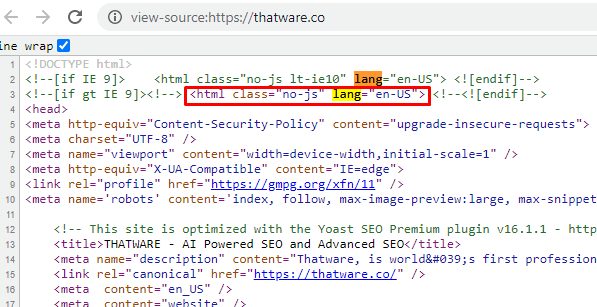SUPERCHARGE YOUR ONLINE VISIBILITY! CONTACT US AND LET’S ACHIEVE EXCELLENCE TOGETHER!
Ensuring your website ranks well on search engines like Google requires more than just relevant content—it requires the right SEO-friendly language. Language Optimization SEO focuses on refining the syntax, structure, and wording used across your website so that it is better understood by search engines. This practice helps Google analyze your website more efficiently, rank it higher, and, ultimately, increase its visibility to your target audience.
Language Optimization SEO is to bring into the knowledge of which syntax we should use in our website in order to look more SEO-friendly in the eyes of Google.

What is Language Optimization SEO?
Language Optimization SEO focuses on enhancing the language, structure, and readability of website content to improve its search engine ranking and user engagement. This method involves making the text clear, precise, and accessible for both search engines and human readers. It bridges the gap between how search algorithms interpret content and how users consume information. By ensuring the content is well-structured, easy to understand, and strategically written, websites can achieve better visibility and engagement.
Search engines, like Google, prioritize content that offers value and relevance. Their advanced algorithms can identify well-written, user-focused text and reward it with higher rankings. This makes Language Optimization SEO a critical part of any comprehensive digital strategy.
Key Principles of Language Optimization SEO
1. Use Simple, Clear Language
One of the foundations of Language Optimization SEO is simplicity. Avoid overly complex vocabulary, jargon, or unnecessarily long sentences that confuse readers. Use short, precise sentences to maintain clarity. The goal is to convey information in an easily digestible format. This helps both readers and search engine bots comprehend the content quickly.
For example:
Instead of saying, “Our organization’s comprehensive approach to optimizing content delivers quantifiable success,”
Say, “We optimize content effectively to deliver measurable results.”
2. Optimize Content Structure for Readability
Content structure plays a vital role in making information accessible. A clean layout improves user experience and ensures search engines can index the content correctly. To optimize structure:
- Use headers (H1, H2, H3, etc.) to break up the content into logical sections. This makes the content scannable and user-friendly.
- Use bullet points and lists to organize key details or steps clearly.
- Add short paragraphs (2-3 sentences) to improve flow and keep readers engaged.
Search engines recognize headers as indicators of content hierarchy, and using them appropriately improves SEO. For example:
- H1: Main title (e.g., “What is Language Optimization SEO?”)
- H2: Subsections (e.g., “Why is Language Optimization Important?”)
- H3: Supporting points (e.g., “Improving Content Readability”)
3. Incorporate Keywords Naturally
Keywords are essential for SEO, but they must appear naturally within the content. Search engines penalize keyword stuffing—an outdated practice of excessively repeating terms. Instead, place keywords seamlessly into titles, headers, and body text where they make sense.
For instance:
- Write descriptive, natural sentences such as “Language optimization improves readability and helps search engines rank your content.”
- Avoid forced repetition like “Language optimization is important because language optimization makes content better.”
Use variations of the main term to enhance optimization while keeping the text natural. Tools like semantic keywords and synonyms help diversify the content without compromising quality.
4. Ensure Proper Grammar, Punctuation, and Flow
Content with errors negatively impacts credibility and user experience. Search engines, particularly Google, value high-quality content that reflects professionalism. To optimize grammar and flow:
- Use grammar-checking tools (e.g., Grammarly, Hemingway) to eliminate mistakes.
- Write sentences that connect smoothly, avoiding abrupt transitions.
- Prioritize active voice for a clear and engaging tone.
For example:
Passive: “The article was written to improve SEO strategies.”
Active: “We wrote the article to improve SEO strategies.”
5. Optimize Metadata and Alt Text
Language optimization extends beyond the visible content. Metadata—like meta titles, descriptions, and image alt text—also influences SEO performance:
- Meta Titles: Include a keyword and keep it concise (50–60 characters).
- Meta Descriptions: Write brief, compelling summaries (150–160 characters) to encourage clicks.
- Alt Text: Add descriptive text to images so search engines can understand visual elements.
Example of optimized meta content:
- Meta Title: “Language Optimization SEO: Boost Content Readability and Rankings”
- Meta Description: “Learn how Language Optimization SEO improves clarity, user experience, and search engine rankings with simple techniques.”
Why Language Optimization Matters for SEO
Effective Language Optimization SEO enhances both technical and human aspects of content consumption. It ensures search engines can analyze and rank your pages while also keeping users engaged. High-quality, readable content lowers bounce rates, increases dwell time, and encourages conversions—all signals that further improve SEO performance.
By focusing on clean language, logical structure, and natural keyword integration, Language Optimization SEO not only aligns with search engine guidelines but also builds trust and authority with readers. It’s a critical strategy for long-term digital success.
Incorporating these principles into your content strategy allows you to achieve better search engine visibility while keeping your audience informed and engaged. Clear, well-optimized content is the key to thriving in today’s competitive digital landscape.
Why is SEO-Friendly Language Important?
SEO-friendly language is a cornerstone of any successful content strategy. It ensures that your content not only resonates with your target audience but also aligns with how search engines interpret and rank web pages. At its core, SEO-friendly language bridges the gap between what users are searching for and what search engines, like Google, display in their search results. This practice involves clarity, strategic use of keywords, and effective content structure to drive visibility, improve user engagement, and boost your rankings. Here’s why SEO-friendly language is essential for any website or business aiming to succeed online.
1. Better Communication with Search Engines
Search engines use advanced algorithms to “read” and understand content on your website. For your content to rank well, Google must be able to interpret the topic, relevance, and intent of the page. SEO-friendly language plays a pivotal role in helping search engines understand your content clearly and accurately.
- Clear Syntax and Structure: Using proper sentence structure, headings (H1, H2, H3), and logical organization allows search engines to quickly identify your main topic and subtopics. Search crawlers favor well-structured content because it signals relevance and quality.
- Strategic Keyword Usage: By incorporating relevant keywords naturally, you help Google match your content to user queries. Instead of keyword stuffing, focus on using phrases that flow organically within sentences, headers, and metadata.
For example, if your target phrase is “SEO-friendly language,” you might write:
“SEO-friendly language helps both search engines and readers understand your content easily, improving its value and visibility.”
When search engines clearly grasp the context and intent of your content, your page has a better chance of ranking higher in search results.
2. Enhanced User Experience
SEO isn’t just about search engines; it’s equally about delivering value to users. User experience (UX) is a critical factor that determines how long visitors stay on your page, whether they find the content helpful, and whether they take action.
- Readable Content: SEO-friendly language prioritizes clarity, simplicity, and readability. Short paragraphs, bullet points, and concise sentences make content easier to consume. Readers appreciate content that answers their questions quickly and directly.
- Scannable Structure: Most users skim content before deciding to read it thoroughly. Breaking text into sections with descriptive headers, bolded key points, and lists improves scannability, helping users find the information they need effortlessly.
When users stay longer on your page because of its readability, search engines interpret this as a positive signal, recognizing your content as valuable and engaging. This can lead to improved rankings.
3. Targeting the Right Audience
SEO-friendly language ensures that your content reaches the people who are actively searching for it. By aligning your language with specific search terms and user intent, you attract the right audience to your website—whether they’re looking for answers, products, or services.
- Intent Matching: Different searches reflect different intents. Some users seek information (e.g., “What is SEO-friendly language?”), while others look for solutions (e.g., “SEO-friendly content services”). Using the right language allows you to tailor your content to meet those specific needs.
- Content Relevance: When your content speaks directly to your audience’s queries or pain points, it increases the likelihood of engagement, conversions, and return visits.
For instance, if you’re targeting businesses looking for SEO services, phrases like “boost your search rankings with optimized content” are more relevant than generic language. This focused approach brings visitors who are more likely to find your content helpful and take the desired action.
4. Improved Ranking Opportunities
Google’s algorithms are designed to prioritize content that aligns with user intent, offers clarity, and adds value. SEO-friendly language improves ranking opportunities by ensuring your content meets these criteria:
- Keyword Integration: Integrating keywords naturally across your content, including headers, body text, and meta descriptions, helps search engines associate your content with specific search terms.
- Proper Use of Headings: Headings like H1 (main title), H2 (subsections), and H3 (subpoints) improve the hierarchy and readability of content, signaling relevance to search engines.
- Clarity and Flow: Content that is clear, well-organized, and free from grammatical errors reflects quality. Google rewards high-quality, user-focused content with better visibility in search results.
For example, consider two articles on the same topic. One uses clear, concise language with natural keywords and structured headings, while the other is cluttered
Key Components of Language Optimization SEO
SEO is more than just sprinkling keywords throughout content—it’s about enhancing user experience, ensuring search engines can interpret your page, and delivering valuable information in an engaging manner. To achieve this, content needs to be optimized using natural keyword integration, readable structures, and well-organized elements such as headers, meta tags, and alt text. Let’s explore each of these techniques in detail to understand how they can elevate your SEO strategy.
1. Natural Keyword Integration
One of the most common mistakes in SEO is “keyword stuffing,” where content is overloaded with repetitive keywords in an unnatural manner. Search engines, particularly Google, penalize such practices because they degrade content quality and user experience. Instead, the focus should be on integrating keywords seamlessly and organically into the content.
- Use Keywords Naturally: Keywords should fit contextually within the text without disrupting readability. Rather than forcing them into every sentence, use them strategically in titles, headers, and body text where they add value.
For example:
Instead of: “SEO-optimized content helps SEO rankings for SEO websites.”
Use: “Creating SEO-optimized content improves search engine rankings and makes your website more visible to your target audience.” - Incorporate Synonyms and Variations: Search engines have become smarter and can understand variations of the main keyword through semantic search. Instead of repeating the same term, use synonyms, related phrases, and contextually relevant language.
For instance, if your main keyword is “SEO-friendly content,” you can include variations like “optimized content,” “content for SEO,” or “search-engine-friendly content.” - Focus on User Intent: Understand what users are searching for and tailor your content to meet that intent. Whether the query is informational, navigational, or transactional, use keywords naturally to align your content with user needs.
By prioritizing natural flow and readability, keyword integration feels effortless, keeping both readers and search engines satisfied.
2. Readable Sentence Structures
Readable content is at the heart of SEO success. Google prioritizes well-organized, scannable content because it enhances the user experience. Readers are more likely to engage with content that is easy to read, concise, and visually appealing.
- Short Sentences and Paragraphs: Break long sentences into shorter, digestible ones. Avoid overwhelming the reader with large text blocks. Paragraphs should ideally be no more than 2-3 sentences.
Example:- Unoptimized: “SEO is a powerful tool that helps businesses improve their online visibility, attract more customers, and ultimately increase their sales by targeting relevant keywords and improving search rankings.”
- Optimized: “SEO helps businesses improve visibility, attract customers, and boost sales. By targeting relevant keywords and optimizing rankings, you can grow your online presence effectively.”
- Use Bullet Points and Lists: Bullet points improve scannability by highlighting key points quickly. Users can skim through the content to find exactly what they’re looking for.
Example:
SEO-friendly content includes:- Clear, concise language.
- Proper keyword integration.
- Logical content structure with headings.
- Optimized meta tags and images.
- Write in Active Voice: Sentences written in active voice are clearer and more engaging than those in passive voice.
Example:- Passive: “The content was written to improve search rankings.”
- Active: “We wrote the content to improve search rankings.”
Readable structures not only engage readers but also reduce bounce rates, signaling to Google that your page offers value.
3. SEO-Optimized Meta Tags
Meta tags—like meta titles and meta descriptions—are crucial for improving visibility in search results. These tags summarize the content of your page and provide a preview for both search engines and users.
- Meta Titles: The meta title should include the target keyword naturally and convey the purpose of the page. Keep it within 50-60 characters to ensure it displays fully on search engines.
Example:- “SEO-Friendly Content: Boost Your Website Rankings Naturally”
- Meta Descriptions: A compelling meta description (150-160 characters) should briefly summarize the content and entice users to click. It should include the main keyword while maintaining a natural tone.
Example:- “Learn how to create SEO-friendly content that improves search rankings, engages users, and drives traffic to your site with proven techniques.”
Optimized meta tags increase click-through rates (CTR) and improve the chances of ranking higher.
4. Header Hierarchies for Logical Structure
Headers (H1, H2, H3, etc.) are essential for structuring content logically and improving readability. They not only guide readers through the content but also help search engines understand its hierarchy and key points.
- H1 for Main Title: Use the H1 tag for the main topic or title of the page. This should include the primary keyword and set the stage for the content.
- H2 for Subheadings: Break the content into sections with H2 headers that outline the main points or themes.
- H3 for Supporting Points: Use H3 headers for sub-points or to expand on ideas introduced under an H2 header.
Example:
- H1: What is SEO-Friendly Content?
- H2: Benefits of SEO-Friendly Content
- H3: Improved User Experience
- H3: Higher Search Rankings
- H2: Benefits of SEO-Friendly Content
This hierarchy makes your content easy to navigate and enhances search engine indexing.
5. Alt Text for Images
Images play a crucial role in engaging readers, but search engines can’t “see” images—they rely on alt text to understand them. Alt text describes the image content using relevant keywords, improving SEO and accessibility.
- Be Descriptive and Relevant: Clearly describe what’s in the image without overloading it with keywords.
Example:- For an image of a laptop displaying analytics: “Laptop showing SEO analytics dashboard with website metrics.”
- Use Keywords Naturally: Include a keyword where appropriate, but keep it organic and meaningful.
Alt text enhances the user experience for visually impaired readers and ensures your content is indexed accurately in image searches.
What is the “content-language” Meta Tag?
The “content-language” tag is a meta tag in the <head> of an HTML document that states the language and country of that a page’s content is most relevant for.
The tag looks like this:
<meta http-equiv=”content-language” content=””>
The content attribute is where you will define the language and country. So for American English, it would look like this:
<meta http-equiv=”content-language” content=”en-us”>
Source Code Analysis for Language Optimization SEO:
For this website, we have following code available on the site. Screenshot below for your reference:

Content-Language, an entity-header, is generally used to describe the languages intended for the audience. So that it allows a user to differentiate according to the users’ own preferred language. The entity headers are used in both, HTTP requests and responses.
Accept-Language, a request HTTP header, advertises which languages the client is able to understand, and which locale variant is preferred. There can be multiple languages, each with an optional weight or ‘quality’ value. For example:
Accept-Language: da, en-GB;q=0.8, en;q=0.7
(The default weight is 1, so this is equivalent to da;q=1, en-GB;q=0.8, en;q=0.7).
You’re going to have to parse the values and weights to see if an appropriate translation is available. And provide the user the translation in the highest preferred language weight.
Generally to force a certain language for your site. This is because some users may want to see your site in a certain language. That is without changing their language acceptance preferences.
Content-Language Header
The Content-Language header is associated with a particular page by settings on the server or by server-side scripting. For example, you will typically find a Content-language header in the HTTP metadata when a server holds more than one version of a resource, each in a different language. Assume, the server uses the information it has about you to automatically select a particular language version (‘content negotiation’). Then, the language version selected identified in the HTTP header.
The HTTP Content-Language header can provide useful language data related to the page or resource you are retrieving, but the HTTP specification indicates clearly that the intent of this information is to provide metadata about the intended audience of the document, rather than to indicate the actual language of the text itself. The metadata is for serving the right language version, workflow management, classification, searching, etc.
Conclusion
Language Optimization SEO is a powerful strategy that bridges the gap between search engine algorithms and human readability. By focusing on clear, concise, and well-structured content, businesses can significantly enhance their online visibility and user engagement. Crafting content with natural keyword integration, logical sentence flow, and optimized headers ensures search engines can effectively understand, index, and rank your pages.
A well-optimized language strategy doesn’t just cater to search engines but also enhances the overall user experience. Content that is easy to read, scannable, and valuable keeps visitors on the page longer, reduces bounce rates, and encourages conversions. From the careful use of meta tags and alt text to structuring content with header hierarchies, each element works together to signal relevance and quality to both Google and your target audience.
In today’s digital landscape, where competition is fierce, adopting SEO-friendly language is no longer optional—it is essential. Search engines prioritize content that aligns with search intent and delivers value. By leveraging tools like natural language processing, semantic keywords, and proper grammar, businesses can stand out in search results and attract the right audience.
ThatWare LLP, a pioneer in advanced SEO solutions, understands the significance of Language Optimization SEO in driving measurable results. Their expertise lies in helping businesses achieve higher rankings through tailored, data-driven strategies that align with Google’s evolving algorithms. By implementing optimized content techniques, ThatWare LLP empowers brands to build authority, connect with their audience, and achieve sustainable growth.
Incorporating SEO-optimized language into your content strategy is a step toward long-term success. Whether you’re creating blogs, landing pages, or product descriptions, the right language ensures your message reaches the right audience at the right time. By following a structured approach to keyword integration, readability, and meta optimization, businesses can unlock new opportunities for growth and engagement.
The definitive guide to Language Optimization SEO serves as a roadmap for businesses looking to enhance their content strategy. By partnering with experts like ThatWare LLP, you can navigate the complexities of SEO language and position your brand for success in the digital world. Start optimizing your content today to deliver value, boost search rankings, and stay ahead of the competition.

Thatware | Founder & CEO
Tuhin is recognized across the globe for his vision to revolutionize digital transformation industry with the help of cutting-edge technology. He won bronze for India at the Stevie Awards USA as well as winning the India Business Awards, India Technology Award, Top 100 influential tech leaders from Analytics Insights, Clutch Global Front runner in digital marketing, founder of the fastest growing company in Asia by The CEO Magazine and is a TEDx speaker and BrightonSEO speaker.


